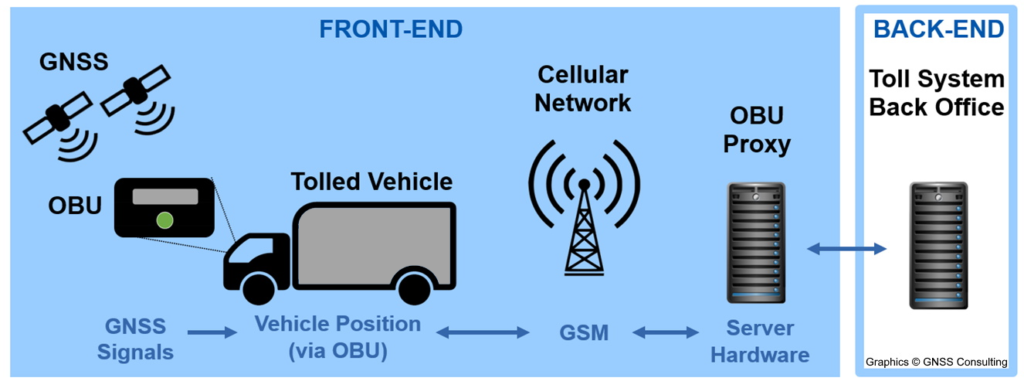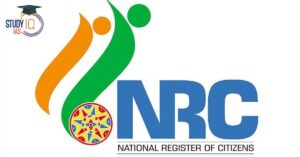Table of Contents
Electoral Offences
Context: The police registered a case against Hamirpur’s Independent legislator Ashish Sharma and others on charges of “electoral offences” and bribery.
The Representation of People’s Act, 1951
- The Representation of People’s Act, 1951 (RPA, 1951) is a crucial piece of legislation in India that outlines the framework for conducting elections,
- establishing the qualifications and disqualifications for membership in the Parliament and State Legislatures,
- addressing corrupt practices and other offences related to elections, and
- resolving disputes arising from elections.
- It was introduced by Dr. B.R. Ambedkar, the then law minister, and enacted by the provisional parliament under Article 327 of the Indian Constitution before the first general election.
Corrupt practices under the RPA, 1951
- Section 123 of the Act: It encompasses behaviours by a candidate aimed at enhancing their electoral prospects through:
- Bribery,
- Undue influence,
- Disseminating false information,
- Encouraging or attempting to incite enmity or hatred among different classes of citizens based on religion, race, caste, community, or language,
- Spending or authorising expenditure in violation of section 77.
- Section 123 (2): Undue influence includes any direct or indirect interference with the free exercise of electoral rights, including threats, social ostracism, or implying divine or spiritual consequences for supporting or not supporting a certain candidate.
- Section 123 (3): It prohibits the candidate from using their race, caste, community or language for the purpose of seeking votes.
- Section 123 (4): It broadens the scope of corrupt practices to include making or promoting the publication of false statements about a candidate to affect their election outcome.
An elected representative can be disqualified under the Act for:
- Being convicted of certain offences,
- Engaging in corrupt practices,
- Failing to declare election expenses,
- Having interests in government contracts or works.
Supreme Court’s Stance
- In 2017, the Supreme Court of India ruled that soliciting votes based on a candidate’s religion, race, caste, community, or language, in line with Section 123 (3) of RPA, would annul the election.
- In 2022, the Supreme Court instructed a three-judge panel to reevaluate its decision from the 2013 case of ‘ Subramaniam Balaji vs State of Tamil Nadu.’
- In the original judgement, the court determined that election promises of free gifts or benefits were not considered corrupt practices. The reconsideration of this stance remains pending.
We’re now on WhatsApp. Click to Join
GNSS Based new Toll Collection System
Context:
- The Indian government plans to implement a Global Navigation Satellite System (GNSS)-based highway toll collection system, aiming for operation before the 2024 election model code of conduct.
- This system utilises satellite navigation for more precise location tracking, leveraging India’s GAGAN system alongside other global systems.
Operation Mechanism
- Vehicles will be fitted with an On-Board Unit (OBU), a tracking device.
- The OBU’s location is tracked using GAGAN with an accuracy of about 10 metres.
- Digital image processing logs the coordinates of national highways.
- The software calculates tolls based on the distance travelled and deducts the amount from a linked wallet.
- Gantries equipped with CCTV cameras enforce compliance by verifying vehicle OBUs and capturing high security registration plates.

Advantages
- Enables pay-as-you-use tolling, charging for actual distance travelled.
- Promotes barrier-free highway movement.
Challenges
- Toll Recovery Issues: Without barriers, recovering tolls from users with insufficient funds in their linked digital wallets poses a significant challenge.
- Enforcement Difficulties:
- Addressing non-compliance, such as vehicles without OBUs or with intentionally disabled devices.
- Distinguishing vehicle types to prevent toll evasion (e.g., cars using truck OBUs).
- Infrastructure Requirements: Implementing ANPR systems nationwide, where current infrastructure is inadequate.
- Legal and Regulatory Adjustments: Amendments are needed in the National Highways Fee Rules for toll recovery, defining offences, and mandating OBUs.
Privacy Safeguards
- Use of GAGAN Over GPS: Opting for India’s GAGAN system enhances data security, keeping data within national jurisdiction.
- Digital Personal Data Protection Act, 2023: Addresses privacy concerns, though it faces criticism over potential for increased state surveillance.
Future of FASTags
- Co-existence with GNSS Tolling: FASTags and the GNSS-based system will operate simultaneously; a decision on making OBUs mandatory is pending.
- FASTag Adoption and Success: With high compliance and increased toll collection since its 2016 introduction, FASTags have demonstrated effectiveness. The GNSS system, however, promises lower operational costs and efficiency improvements.
About GPS-Aided GEO Augmented Navigation (GAGAN)
- Developed by: Jointly by the Indian Space Research Organisation (ISRO) and the Airports Authority of India (AAI), enhancing the GPS signals in India.
- Functionality: GAGAN uses ground stations to augment the GPS Standard Positioning Service (SPS), improving accuracy, availability, and integrity for users.
- Aviation Applications: It is tailored for the aviation sector, allowing GPS to be relied upon for all flight phases and enhancing Air Traffic Management (ATM) with more accurate position reporting.
- Beyond Aviation: GAGAN also benefits other transportation modes such as maritime, highways, and railroads, extending its utility beyond just aviation.
- Global Context: GAGAN is one of only four space-based augmentation systems globally, alongside the United States’ WAAS, Europe’s EGNOS, and Japan’s MSAS.
Appointment of ECs
Context: The two vacancies in the Election Commission (EC), created by the surprise resignation of Arun Goel and the retirement of Anup Chandra Pandey, are likely to be filled by this month.
How are the CEC and ECs currently Appointed?
- Article 324 provides the structure of the Election Commission of India (ECI), comprising the Chief Election Commissioner (CEC) and two additional Election Commissioners (ECs).
- The President is responsible for appointing the CEC and ECs, subject to the provisions of any legislation enacted by Parliament (provided in the Constitution).
- Present law only provides for the terms for ECI officials, but not their appointment.
- This raises concerns about independence, as appointments by the President (effectively the government) lack a formal check for neutrality.
Key Highlights Of the Bill
The new bill replaces the Election Commission (Conditions of Service of Election Commissioners and Transaction of Business) Act, 1991. It provides for the following:
- Appointment Process: The Chief Election Commissioner (CEC) and Election Commissioners (ECs) will be appointed by the President upon the recommendation of a Selection Committee.
- Selection Committee: The Selection Committee will consist of:
- Prime Minister
- Union Cabinet Minister
- Leader of Opposition/leader of the largest opposition party in Lok Sabha (Current: Adhir Ranjan Chowdhury)
- Search Committee: A Search Committee headed by the Cabinet Secretary will propose a panel of names to the Selection Committee.
- Eligibility: To be eligible for the posts, candidates must have held (or currently hold) a post equivalent to the Secretary to the central government.
- Salary and Conditions of Service: The salary and conditions of service of the CEC and ECs will be equivalent to that of a Cabinet Secretary. This is a change from the 1991 Act, which pegged their salary to that of a Supreme Court Judge.
Zero Food Children
Context: A study published recently in the peer-reviewed JAMA Network Open journal found the prevalence of zero-food children in India at 19.3%, drawing attention to extreme food deprivation among children.
Findings of the Study
- Global Ranking: India ranks third globally in the percentage of zero-food children, trailing only behind Guinea (21.8%) and Mali (20.5%).
- Number of Zero-Food Children: India has the highest number of zero-food children, with over six million affected.
- Uttar Pradesh’s Share: According to a 2023 study in eClinical Medicine, Uttar Pradesh alone constitutes 28.4% of India’s zero-food children.
- Impact of Urbanization in Uttar Pradesh: The urban population in Uttar Pradesh is approximately 23% as per the 2011 Census, with a growth of over 25% from 2001 to 2011, indicating a significant migration towards urban centres for livelihood.
- Major Contributing States: These five states together account for nearly two-thirds of India’s total zero-food children.
- Uttar Pradesh: 28.4%
- Bihar: 14.2%
- Maharashtra: 7.1%
- Rajasthan: 6.5%
- Madhya Pradesh: 6%
- Factors Contributing to the Issue: Poverty, economic marginalisation, rapid urbanisation, and the trend towards nuclear families are major factors.
- Lack of awareness about children’s nutritional needs and social misconceptions also play significant roles.
Examples, Case Studies and Data Points For Value Edition
- Women Empowerment (GS 1, GS 2): The Centre’s Annual Survey of Industries 2021-22, shows that 42% of the country’s total women factory workforce was employed in Tamil Nadu.
-
- Karnataka secured the second position, albeit with a considerable gap, hosting a mere 14% of the female workers.


 Operation Baam: Baloch Separatist Group ...
Operation Baam: Baloch Separatist Group ...
 National Register of Indian Citizens (NR...
National Register of Indian Citizens (NR...
 World Population Day 2025, Themes, Histo...
World Population Day 2025, Themes, Histo...





















